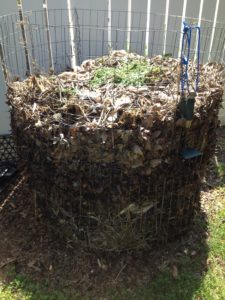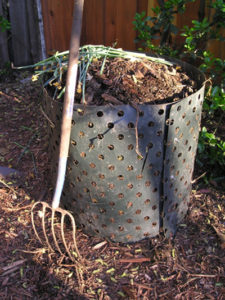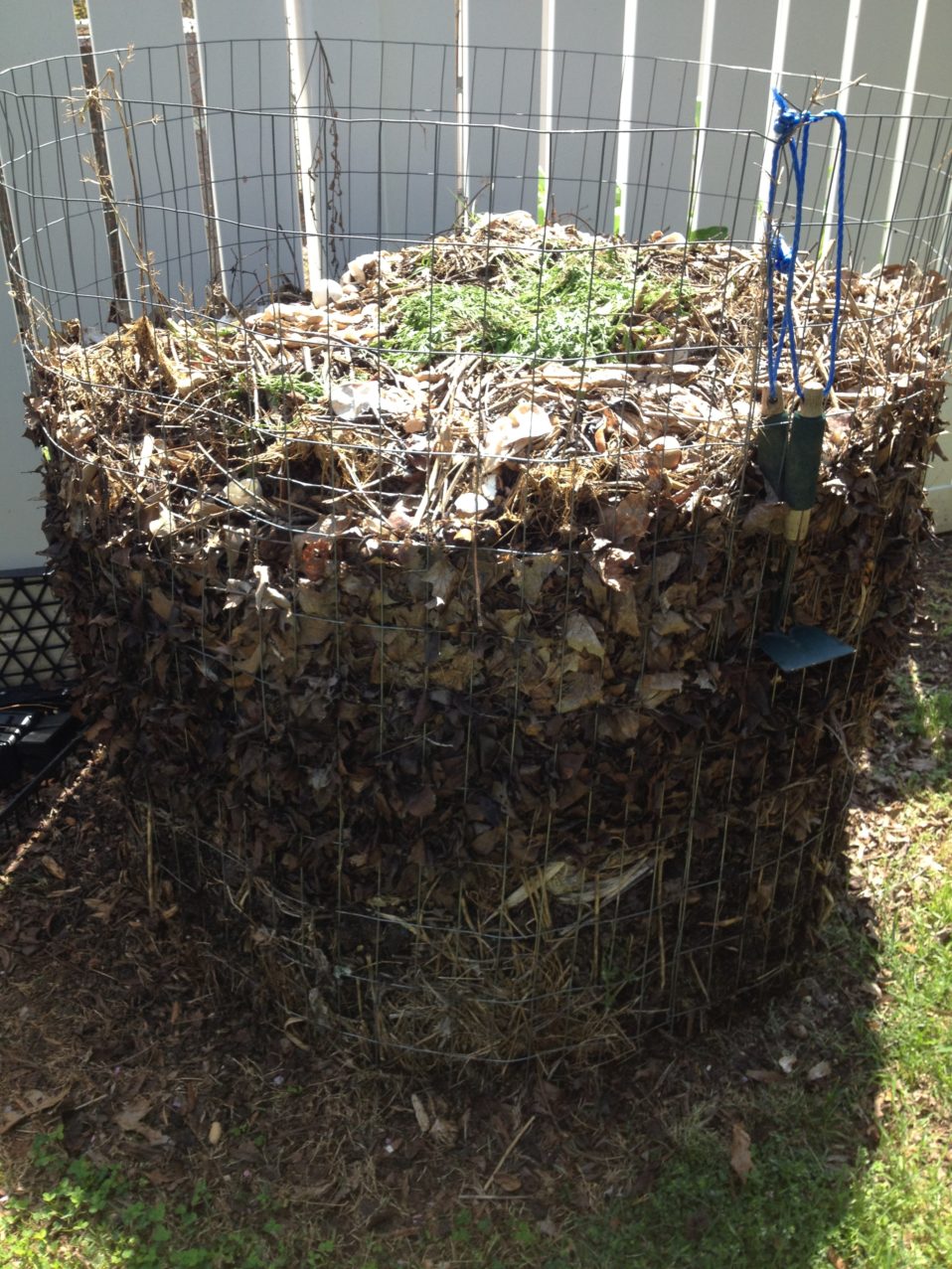Build a Compost Pile this Winter
Winter in Houston is a great time to start an outdoor compost pile because leaves (a carbon source) are plentiful. Making compost is like baking a cake: mix your 4 ingredients (carbon, nitrogen, water, and oxygen) in the correct proportions, and then let it cook!
Compost is a dark, nutrient-rich organic material that is the result of decomposed garden and kitchen waste. The two main benefits of composting are:
- responsibly disposing of your kitchen scraps (nitrogen), and;
- using free materials to create “black gold” to improve the quality of your soil and help grow healthy plants.
The most important thing to remember is that composting is a natural process. It is going to happen anyway, we are just trying to speed it up a little and control the end product (compost).
What You’ll Need
Bin: While not absolutely necessary, compost piles in bins have a neater appearance and heat up faster, speeding up the composting process. You can buy a bin, or build one inexpensively from simple materials like old pallets or welded wire.
Dedicated space: Place your bin anywhere that is convenient. A sunny location will help speed up the “cooking” (hot compost piles need to heat up) and will require more water than a shady location.
Tools: You probably already have all the tools you need! A shovel, garden hose, wheelbarrow (for transporting), rake (for keeping the area tidy), and a pitchfork or similar tool (optional, but useful for aerating and turning your compost).
4 Essential Ingredients & Why It Works
This aerobic (with air!) composting is powered by microbes that require oxygen. You make compost by combining the right amounts of 4 ingredients: water, oxygen, carbon, and nitrogen.
Water and oxygen: Make sure your batch is thoroughly moistened. The pile should be moist but no water should come out if you squeeze a handful, like a wrung out sponge. Oxygen is provided by turning the compost or by including chunky materials such as twigs and Sweet Gum tree gum balls.
Carbon: This is the “brown” material you add to your batch. One of the easiest (and cheapest!) sources is fallen leaves, which can be collected in the fall and winter and stored for multiple compost batches throughout the year.
Nitrogen: This is the “green” material and is what heats up your hot compost pile. Sources include fresh manure from farm animals, grass clippings (be careful about including clippings from a lawn sprayed with insecticide or herbicide), and raw vegetable kitchen scraps (no meat or dairy!). Coffee grounds, though brown, are actually “green material.” You can also use purchased organic materials such as alfalfa meal, cottonseed meal, or blood meal.
Starting Your Compost Pile 
Layer the raw materials, following this sequence 3 or 4 times until your bin is full:
- Add about one foot of leaves (about 3-4 bags in the simple bin described above). Pack it down with a rake and soak the leaves.
- Add nitrogen (food scraps, cow manure, grass clippings, etc), spreading it evenly over the surface of the leaves.
- Add one shovelful of rich soil or finished compost (to introduce beneficial microorganisms that will break down food scraps and leaves.)
- Mix well with a garden fork while watering until the layer is soaked.
- Repeat until the bin is full. Be sure to end with a layer of carbon to reduce odors that could attract pests.
Upkeep Directions
Turning the Hot Compost Pile: To maximize the hot compost pile, turn it roughly once per month. Turning the pile consists of remixing the material in the bin. If you do not turn the hot compost pile, you have a cool/passive pile and that’s okay; it will simply take longer to get rich compost.
Adding Food Scraps: Save your family’s food scraps and add them to your bin each week. Fresh food scraps should always be buried in the carbon material to avoid fruit flies and other unwanted pests!
Worms! Nightcrawler worms can be added to compost piles to help speed up the rate of decomposition. This is also a great way to get kids involved in your new composting hobby! You can buy bait worms or dig in the dirt on a worm search.



